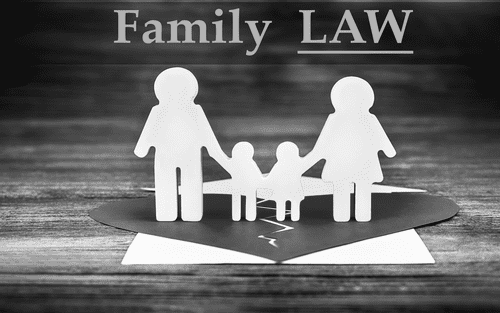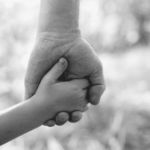Introduction
Domestic violence in North Dakota is defined as “physical harm, bodily injury, sexual activity compelled by physical force, assault, or the inflicting of fear of imminent physical harm, bodily injury, sexual activity compelled by physical force, or assault, not committed in self-defense, on the complaining family or household members.” N.D.C.C. § 14-07.1-01(2).
Studies show that in the United States, approximately 20 people per minute experience domestic violence in the form of intimate partner violence. While it is true that men also experience domestic violence, the evidence suggests that women are more susceptible to being victims of intimate partner abuse. The National Coalition Against Domestic Violence reports that 1 in 4 women experience intimate partner violence versus 1 in 9 men. While domestic violence is prevalent in our society regardless of age, background, or sexual orientation, studies show that Hispanic women experience domestic violence in a unique way, therefore, society should draw attention to the special needs of Hispanic female victims.
In other words, Hispanic women experience domestic violence in different ways than White American and African American women. With that being said, Hispanic women still share many of the same challenges as other races such as: hoping that the abuser will change, falling in love with their abuser, fearing their abuser, and experiencing feelings of shame and guilt.
Top 5 Barriers That Deter Hispanic Women From Reporting
A study conducted by the CDC found that 1 in 3 Hispanic women experience domestic violence in their homes. However, the CDC suspects there are many more Hispanic women affected by domestic violence which go undetected as a result of the unique barriers these women face. So, what makes domestic violence for Hispanic women different? Below is a non-exhaustive list of some of the most commonly reported barriers.
Fear Of Deportation
- Threats of deportation and retraction of sponsorship is a common tactic used by abusers to manipulate their victims. This tactic is so common that the Domestic Abuse Intervention Project adapted their “Power and Control Wheel” to reflect these issues.
- However, there are resources for undocumented victims such as pursuing a “U-Visa” which was enacted by Congress in the year 2000 through the “Victims of Trafficking and Violence Protection Act.”
Language Barriers
- For many Hispanic women with little to no English language skills, understanding the extent of their resources makes it increasingly difficult for them to seek out appropriate help.
Cultural Barriers
- Machismo a/k/a Sexism – Machismo is a common gender dynamic that dictates both the positive and negative roles and privileges assigned to males in the Hispanic culture. The positive characteristics include honor, pride, courage, responsibility, and the obligation to support one’s family. The negative characteristics, however, often overshadow the good, as these traits include sexual prowess, high alcohol consumption, and aggressiveness; all of which perpetuate domestic violence.
- Expanding on this issue, the Hispanic culture in many ways still gives its respects to the man as the main “breadwinner” and the woman as the “caretaker” of the home. As a result, economic barriers arise from that type of mentality and leave women with fewer financial resources to walk away.
Familismo & Religion
- Family loyalty is an embedded value of the Hispanic culture and therefore women are less likely to report to the police against their partners.
- On a similar note, the Hispanic culture places a great amount of value on the “sanctity of marriage” which precludes women from taking steps that would lead to separation and/or divorce. Studies have shown that Hispanic women are less likely to use social services or seek restraining orders as compared to African- American and White women.
History Of Child Abuse
- A study by the National Library of Medicine found that adults with a history of child abuse were at an increased risk of experiencing more frequent and a variety of acts of psychological and physical abuse by their partner. Accordingly, the victim becomes more susceptible to attaching to their abuser.
- National statistics developed by the CDC found that high school Hispanic children between the ages of 13-17 who had a history of child abuse had an increased likelihood of becoming victims of sexual intimate partner violence in adulthood.
The Pandemic
- Another important consideration that has affected Hispanic victims is the pandemic. Since the start of the pandemic studies have demonstrated that on a global scale, domestic violence cases have risen between 25-33%. The United States saw a rise of 8.1%.
- A major contributing factor to this issue is the increased time that couples are forced to stay indoors with their perpetrators. The isolation required by the pandemic severed many support networks and made it more difficult for victims to reach out for help. Such an environment left victims in a vulnerable situation which exasperated the physical violence within the marital home.
- The pandemic as it relates to domestic violence also had many secondary effects such as producing larger disparities in income, leaving Hispanic women with even fewer resources.
- Additionally, many prevention and treatment programs, which are already underfunded, were frustrated with cases or were cut altogether.
Conclusion
Domestic Violence has historically been a topic that stays behind closed doors. It is a topic that victims are not eager to open up about and results in shame, guilt, and embarrassment. As a society, however, we should pay more attention because it is a serious public health issue causing anything from a bruise, to a broken arm, mental health issues, and even death. Key to the change needed to help minority victims are resources specially tailored with an understanding of the victim’s language, race, and culture.
If you or someone you know is in need of legal assistance, SW&L Attorneys can now assist you in fluent Spanish with someone you can trust. Call us at 701-297-2890 or email us at: info@swlattorneys.com
This article is for informational purposes only.










